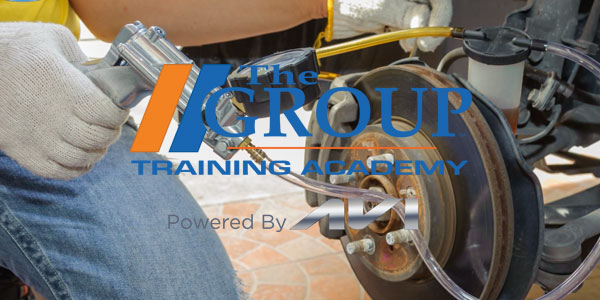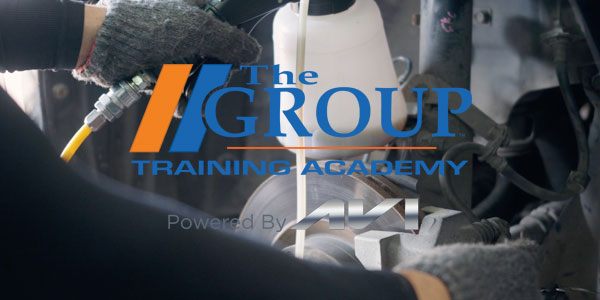When a customer asks for a set of replacement brake pads, what do you recommend?
The least expensive pads? Standard replacement pads? Ultra-premium pads? There are a range of options from which to choose, and many customers may not realize there’s more to the difference than price or brand name.
A variety of ultra-premium pads have been introduced in recent years for specific types of vehicle applications. Many high end European cars typically come factory-equipped with performance pads that are notoriously dusty. Brake pads for many Asian cars are formulated somewhat differently than their domestic counterparts. The point is, to keep your brake customers happy you have to offer a range of different types of replacement pads that fit their needs. Some customers will only buy the least expensive pads you have to offer. Others want pads that feel and perform the same as their old original equipment pads. And some will demand pads that outperform their old brake pads in various ways (better stopping power, quieter, less dust and/or longer wear life). That’s why most brake pad suppliers offer an economy line of products, a standard line and some type of premium or performance pads.
Ceramic brake pads have been a hot commodity in recent years for a variety of reasons. One is that they are much better than many nonasbestos organic (NAO) and semi-metallic pad formulas. Ceramic pads typically run cooler than semi-metallic brake pads (as much as 300 to 350 degrees cooler) for a more consistent feel, and usually produce less rotor wear. Ceramics are also much longer-lived than most NAO pads, and produce much less dust than the typical European formula NAO or low-metallic pads. Because of these advantages, ceramic formula brake pads have been installed as original equipment on many vehicles since the late 1980s.
Over the years, ceramic compounds have evolved into numerous “application-specific” friction materials that have been engineered and tested for specific types of vehicle applications. Consequently, brake manufacturers have dozens of different ceramic compounds from which to choose when selecting a friction material for a particular vehicle.
There are many variables in friction compounds that determine wear, noise and braking characteristics, one of which is the type and size of the ceramic fibers. Ceramic brake pads can be made using a variety of silica-based fibers and particles. The size of the fibers or particles may range from 0.4 to as much as 80 microns in diameter (smaller is better say some brake manufacturers). The ceramic powders are mixed with resins and other ingredients, then molded into pucks that are baked at high temperature in an oven to produce brake pads.
Ceramic friction compounds have stable and predictable friction characteristics. The coefficient of friction does not drop off as quickly as semi-metallics, nor does it fade as quickly as NAO as the brakes heat up. This is called “Mu Variability.” The more stable the friction characteristics are, the more consistent the brake pedal feels whether the brakes are hot or cold. Ceramic fibers don’t “ring” like steel fibers, so there’s almost no brake noise.
How the pads are constructed can also make a difference. Brake pads are usually molded to a steel backing plate that provides support. On some pads, a spike-like surface texture is created on the backing plate so the pad cannot separate from the plate as a result of extreme heat or braking torque. This adds an extra measure of braking safety and also helps extend the life of the pads.
Most pads have a shim on the back to reduce vibration and noise, but some have noise suppression shims molded right into the pad itself. Some brake pads also have a multi-layered construction, with a special coating or different friction material on top to improve break-in performance.
Most OE-equivalent and premium pads are made with chamfers and slots to further tune the noise characteristics of the pads to the vehicle. Chamfers are angled or beveled edges on the leading and trailing ends of the pad that reduce “tip-in” noise when the brakes are first applied. Chamfers also reduce the surface area of the brakes slightly, which increases the clamping force applied by the pads against the rotors. This further helps to dampen sound-producing vibrations.
Slots are grooves cut vertically, diagonally or horizontally in the pads to reduce noise by changing the frequency of vibration from an audible level to a higher, inaudible frequency beyond the range of the human ear. Slots also help reduce brake fade by providing a passage for gases and dust to escape when the brakes are applied.
Finally, when selling ceramic pads to a customer, keep in mind there is no standard definition as to what constitutes a ceramic friction material. It may contain a high percentage of ceramic fibers or very few. Consequently, some brake manufacturers may call their products “ceramic brake pads” when in fact their pads contain very little ceramic fiber and are mostly a NAO friction material.












